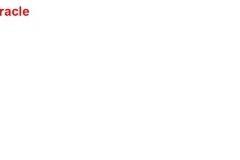Oracle R12 Supply Chain Management (SCM) is a systematic approach to manage the seamless flow of information, materials, and services from raw material suppliers through factories warehouses to the end customer.
Oracle Apps R12 SCM Consist of Below Modules
Oracle Purchasing
Oracle Inventory Management
Oracle Order Management.
From this you were able to know the below:-
Procure to Pay Cycle Overview, Overview of Purchasing Process, Integration with other Oracle Applications, Overview of Suppliers, Supplier Information, Supplier Site Information, Defining and Maintaining Items, Item Categories, Item Attributes, Enterprise Structure, Locations, Organizations, Units of Measure and Items, Defining Locations, Inventory Organizations, Establishing Inventory Parameters, Requisition Life cycle, Requisition Structure, Creating and Maintaining, Creation of RFQs and Quotations, Request for Quotation Life cycle, Request for Quotation Life cycle Implementation, Creation of Purchase Orders, Purchase Order Types, Standard Purchase Order Elements, Blanket Purchase Agreements, Contract Purchase, Planned purchase order, Receiving Locations, Receipt Routing, Receipt Processing Methods, Creation of Blanket Purchase Agreement, Creation of Contract Purchase Agreement, Planned Purchase Order, Blind Receiving Transactions, Express Transactions, Unordered Receipts and Cascade transactions, Inventory Overview, Inventory Capabilities, Oracle Inventory Applications Integration, Integration of Oracle Inventory to Financials, Understanding the Receipt to Issue Life cycle, Understanding Receiving Inventory, Defining Inventory Organizations, Understanding the Inventory Organizations, Understanding the Structure of an Inventory Organization, Understanding Locations, Defining Locations, Difference between Master and Child Organization, Units of Measure Overview, Units of Measure Class Overview, Defining Unit of Measure Class, Defining Unit of Measure, Defining Unit of Measure Conversions, Defining and Maintaining Items, Item Attributes and Statuses, Assigning Items to Organizations, Sub inventories, Defining Subinventory, Inventory Controls, Concepts, Explaining Lot Control (Item Level), Lot Control (Org Level), Explaining Serial Control (Item Level), Explaining Serial Control (Org Level), Explaining Revision Control, Explaining Locator Control, Subinventory Transfers, Explaining Move Order, Creating Manual Move Order, Creating Requisition Move Order, Requisition Move Order Approval Process, Transact Move Orders with 2 Methods, Miscellaneous Transactions, Restrict Subinventories, Inter-Org Transfer, Shipping Methods, Shipping Network, Transit times for Shipping Methods, Entering inter-org transfer charge, Entering Freight Charges, Direct Inter-Organisation Transfer, Performing Reorder-point Planning, Performing Min-max Planning, Explaining Cycle Counting, Explaining Physical Inventory, Defining and Maintaining a Cycle Count, Defining Cycle Count Scheduling and Requests, Overview of Oracle Order Management, Order to Cash Life cycle Overview, Ordering Process, Inventory Organizations, Define Shipping Parameters, Customer Creation, Auto Cash Role Set, Customer Profile Class, Customer Bank Creation, Transaction Types, Transaction Sources, Creating Invoice, Creating Deposit Invoice and Applying the Deposit to Invoice, Enter Orders, Managing Order, Drop Shipment Implementation, Back to Back Order Implementation, Pick Release Sales Orders, Ship Confirm a Delivery, Define a Pick Slip Grouping Rule, Define a Release Sequence Rules etc.









